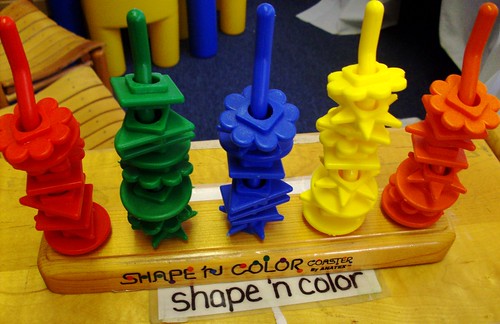Thinking or Evaluation Skills
Children who show delays in the development of their cognitive skills1 need an evaluation. This evaluation helps caregivers and teachers understand what a child’s specific needs are, and to provide intervention as early as possible. Delays in cognitive development may result in delays in other developmental areas and are likely to affect the child’s work at school and his daily life activities as he/she grows older.
Some signs of significant cognitive delays in babies, toddlers and children are below.
Between Birth and Age 12 Months:
- Babies may not develop object permanence; (see full Glossary)
- Babies may not produce speech sounds and may not babble (see full Glossary);
- Babies may not show interest in looking around their own environments;
- Babies may not reach for objects.
At 12 Months and Older:
- Babies and young children may not look at others;
- Babies and toddlers may not engage in games and activities that need joint attention and joint action (see full Glossary);
- Toddlers and young children may not explore their environments;
- Toddlers and young children may not play appropriately with toys;
- Toddlers and young children may not imitate others;
- Toddlers and young children may not pretend that something is something else (for example: pretending that a spoon is a comb);
During preschool ages (2-3 year olds – 5 Year Olds)
- Young children may no tuse imaginary play; that is, they will not pretend that they are someone else (for example, a superhero or a cat);
- Young children may not show they understand basic language, or “qualitative” concepts (for example: tall/short, big/small);
- Young children may not show they understand basic math, or “quantitative” concepts (for example: all, none, a little, a lot);
- Young children may not showthey understand basic where or “spatial” concepts (for example: far/near, over/under);
- Young children may not group or separate toys, or put them into or other objects into categories (for example: ‘only the red blocks go in a container’) (see full Glossary); (Fig. 1)
Fig. 1: Organizing items into categories
- Young children may not match (see full Glossary) pegs, toys or other objects with same colour (for young preschool children); same colour and shape (for older preschool children); same colour, shape and size (for children in kindergarten and older);
- Young children may not put together simple puzzles (for example: large 4-8 pieces); (Fig. 2)
Fig. 2: A 9-piece puzzle that has been assembled
Young children may not recognize a pattern (see full Glossary) and continue it (for example: red blue, red blue);
- Young children may not tell others how old they are when asked;
- Young children may not tell others if they are a boy or a girl when asked;
- Young children may not answer “why” questions (for example: Why do we eat? Why do we sleep?) when asked;
- Young children may not retell basic parts of a short story when asked;
- Young children may not count (first to five, then to 10, then to 20 by age 6);
- Young children may not match objects using one to one correspondence (see full Glossary) (Fig. 3);
Fig. 3: Counting little bears and matching by the corresponding number
- Young children may not imagine or talk about future events (for example: having a birthday party).
Signs of cognitive delay are not always easy to recognize in babies and even toddlers, because they are more subtle than motor delays. It is of great importance that caregivers and others working with babies, toddlers and young children are aware—and provided with information—of their cognitive milestones.



0 comments
Kick things off by filling out the form below.
You must log in to post a comment.